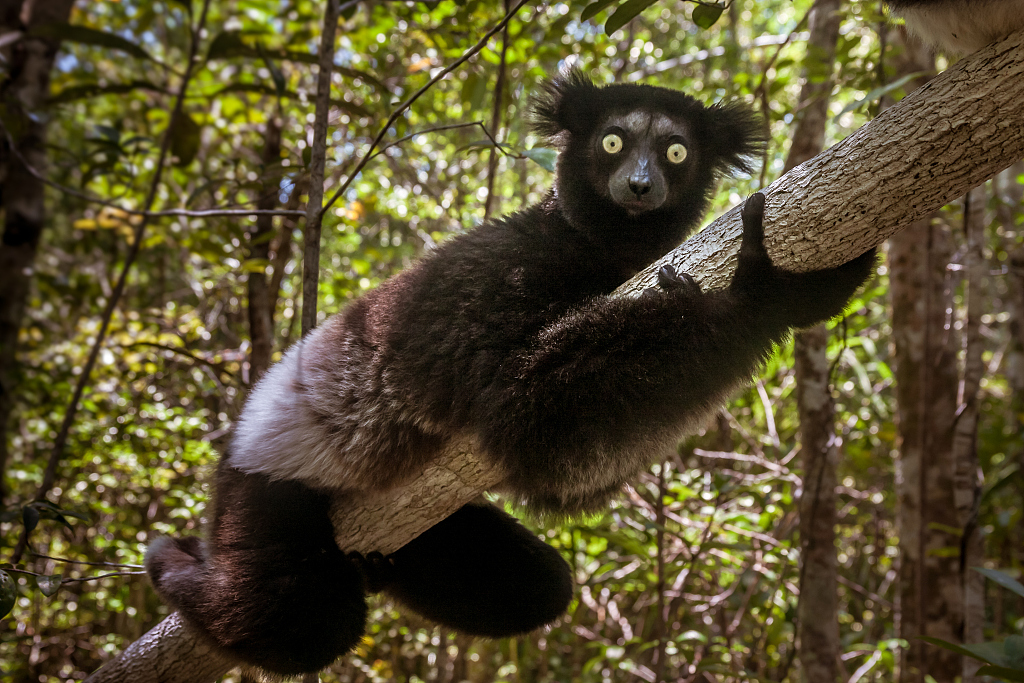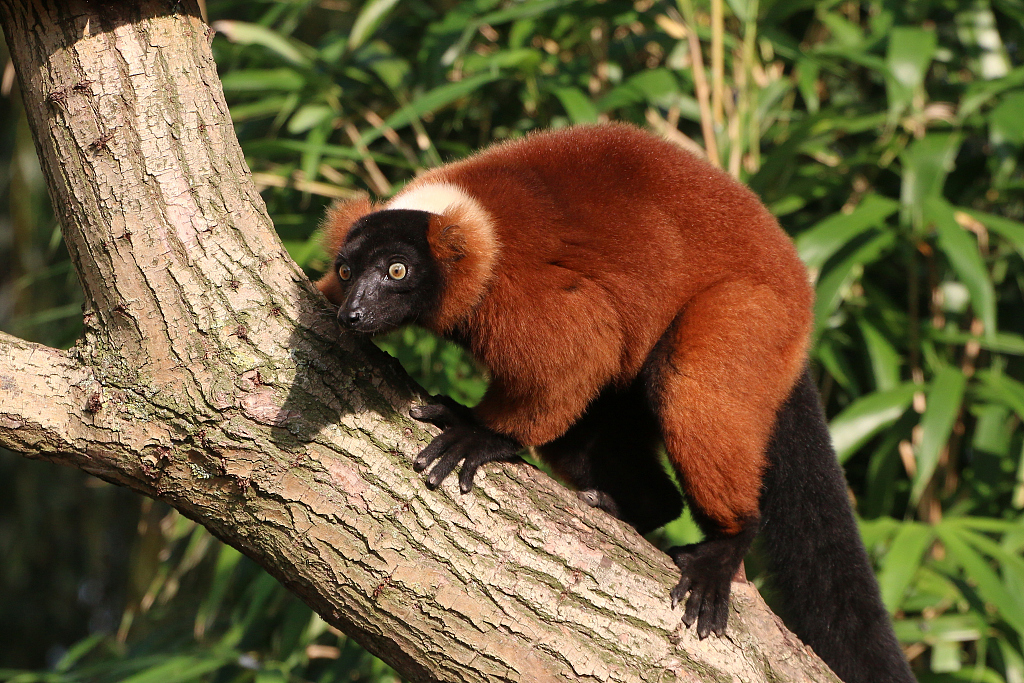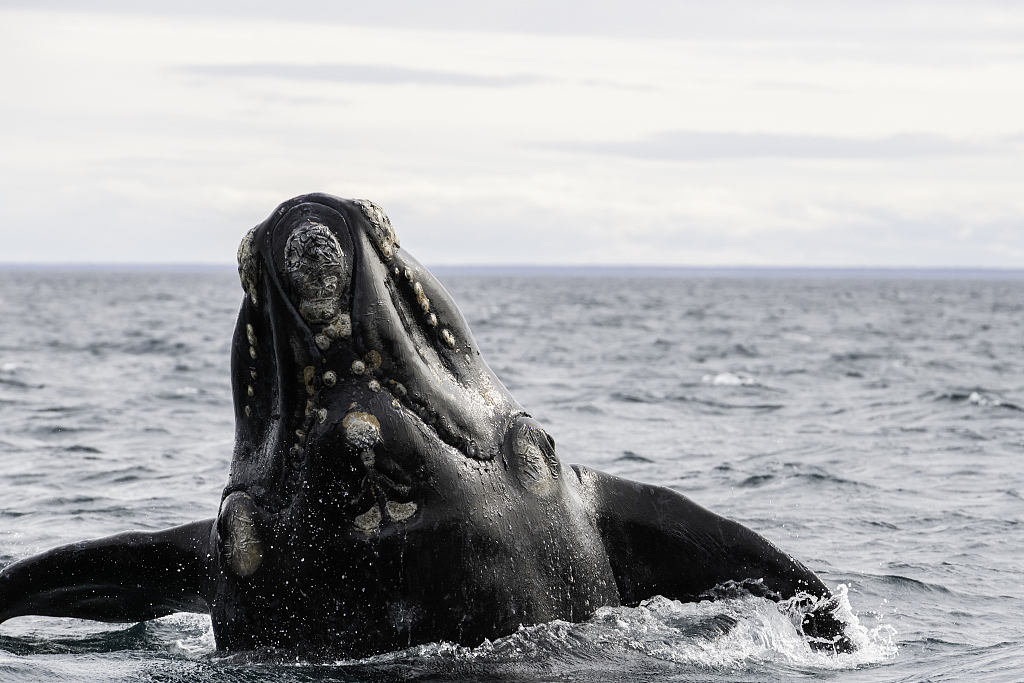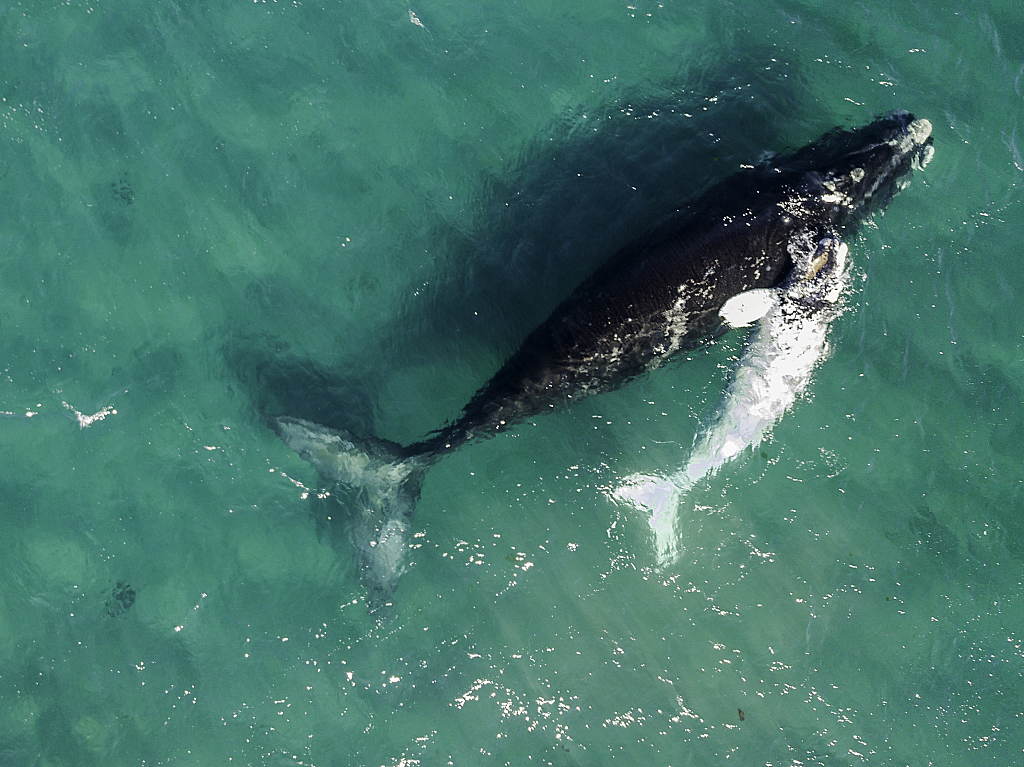Nearly all of Madagascar's much-loved lemurs are under threat, and almost one-third are just one step away from extinction, largely due to deforestation and hunting on the giant island off eastern Africa, conservationists said on July 9.
The International Union for Conservation of Nature, updating its "red list" of threatened species, said the lemurs are increasingly imperiled — a key finding in a broad warning about the impacts of human activity on fauna and flora across the globe.
The Swiss-based conservancy also warns that North Atlantic right whales are nearing extinction: not only are they increasingly ensnared in fishing gear, but they're colliding more with ships, possibly a result of climate change that drives their migratory patterns northward into shipping lanes.

Indri, a species of lemur, is one of the world's 25 most endangered primates. /VCG
Indri, a species of lemur, is one of the world's 25 most endangered primates. /VCG
The "red list" highlights the plight of some 6,000 species that are in the most danger, but also notes that of the 120,000 species of plants, animals and fungi assessed, more than a quarter are threatened with extinction.
"It just helps underline the fact that we are moving into a sixth extinction era. It is all due to human activities," said Craig Hilton-Taylor, the head of the IUCN red list in a video interview from Cambridge, England. He cited human impacts like the introduction of species to places where they don't belong, the overuse of species, clearing of forests to make way for agriculture, urbanization, pollution, "and, of course, climate change."

The red lemur is a critically endangered species in Madagascar. /VCG
The red lemur is a critically endangered species in Madagascar. /VCG
The red list breaks down threatened species into vulnerable, endangered and critically endangered categories, the last involving those closest to extinction. Some 33 of the species of lemurs, which live only in Madagascar, are critically endangered — and 98 percent are threatened.
"We now have less than 10 percent of the original forest in Madagascar left. So, naturally, this has a huge impact on species that are dependent on those forests, like lemurs," Hilton-Taylor said, alluding to "slash and burn" agriculture there. He said more lemur species are being hunted for their meat, too.
He recommended efforts to help improve farmers' livelihoods so they can avoid forest-depleting agricultural techniques.

A North Atlantic right whale. /VCG
A North Atlantic right whale. /VCG
IUCN also said fewer than 250 mature North Atlantic right whales were believed to be alive in 2018, marking a 15-percent drop since 2011. Nearly all of the 30 confirmed human-caused deaths or serious injuries to the whales between 2012 and 2016 were due to entanglement.
Hilton-Taylor said the whales' reproduction rates are falling and cited a theory that warming sea temperatures could be driving the whales northward into the shipping lanes of the Gulf of St. Lawrence in the northern hemisphere summer.

A female North Atlantic right whale with her calf. /VCG
A female North Atlantic right whale with her calf. /VCG
He said the Canadian and U.S. governments have presented recovery plans for the whales, such as by warning ships when the creatures are present in the area and devising fishing systems that run a lower risk of entanglement.
Overall, Hilton-Taylor said, the report suggested that the COVID-19 crisis has demonstrated a pause from the usually frenetic economic and human activity that impacts wildlife.
"We need to take a hard, long, hard look at ourselves," he said, adding species can be saved. "This is our opportunity to really transform society."
(All images via VCG)
(If you want to contribute and have specific expertise, please contact us at nature@cgtn.com.)
Source(s): AP